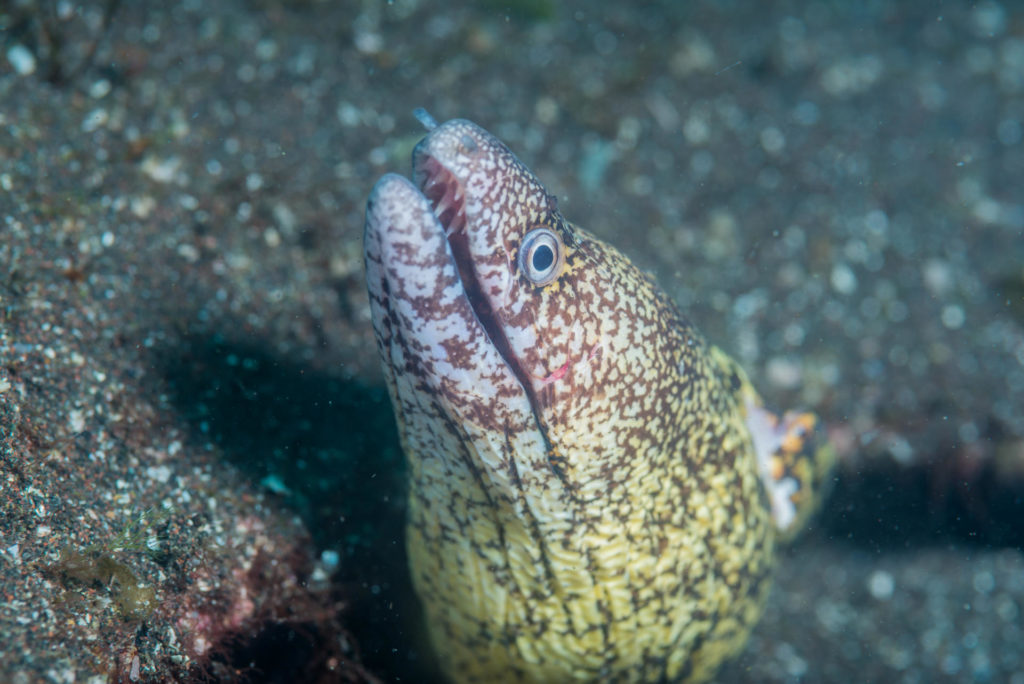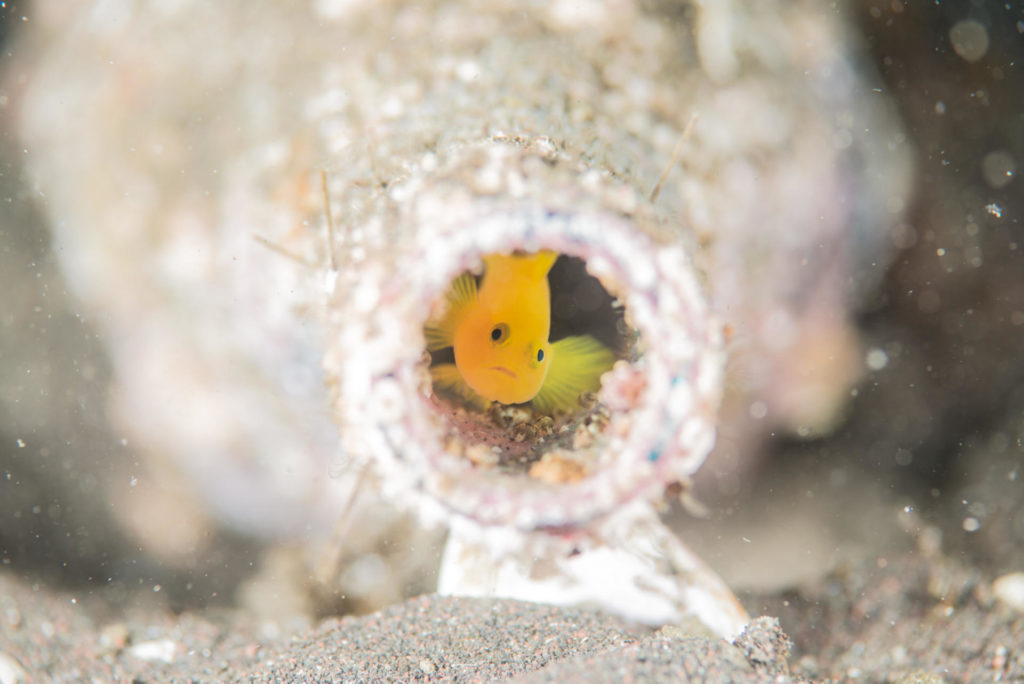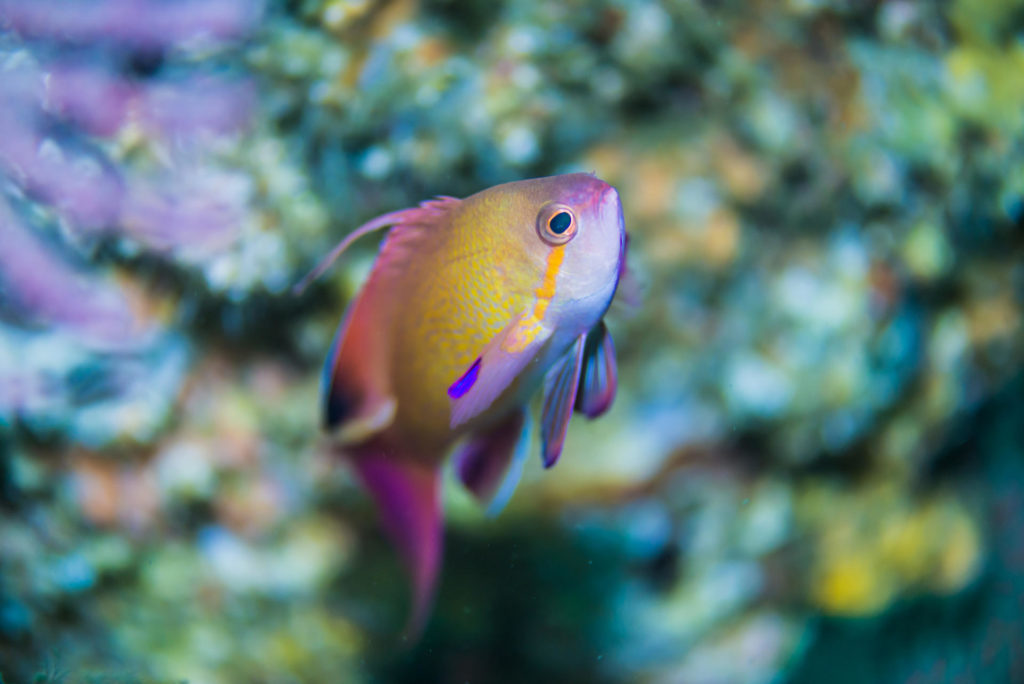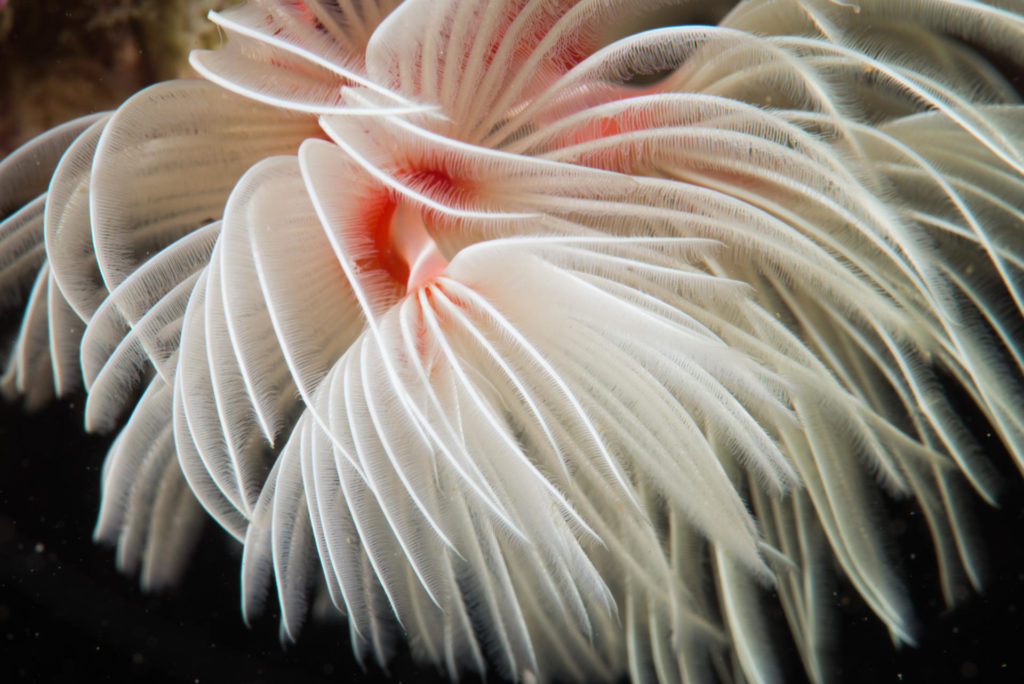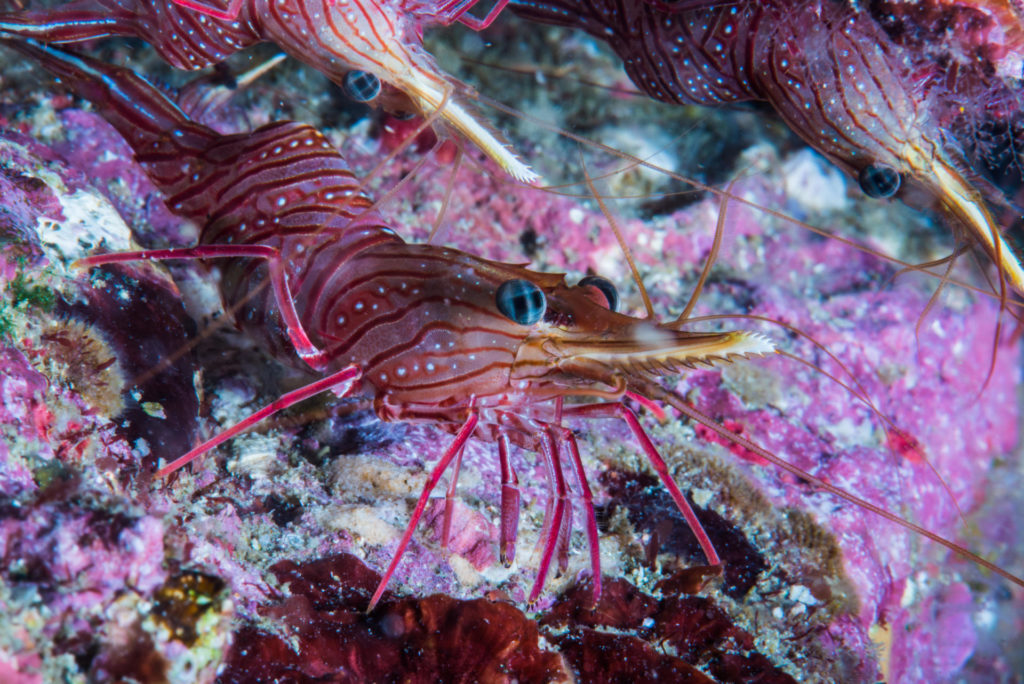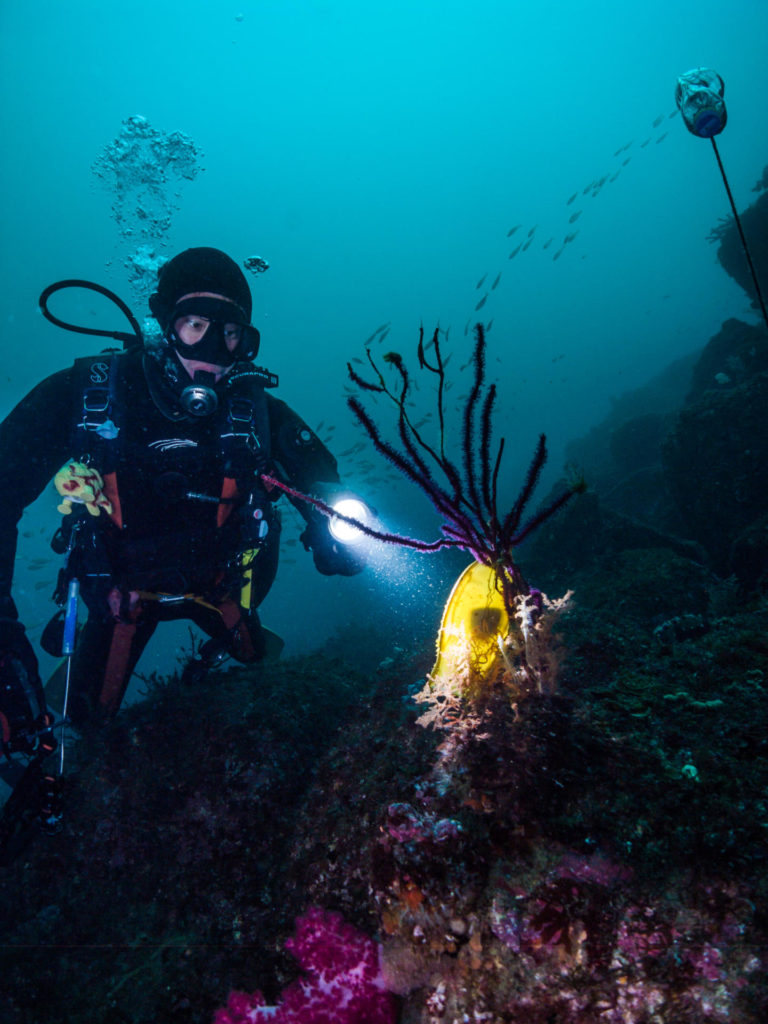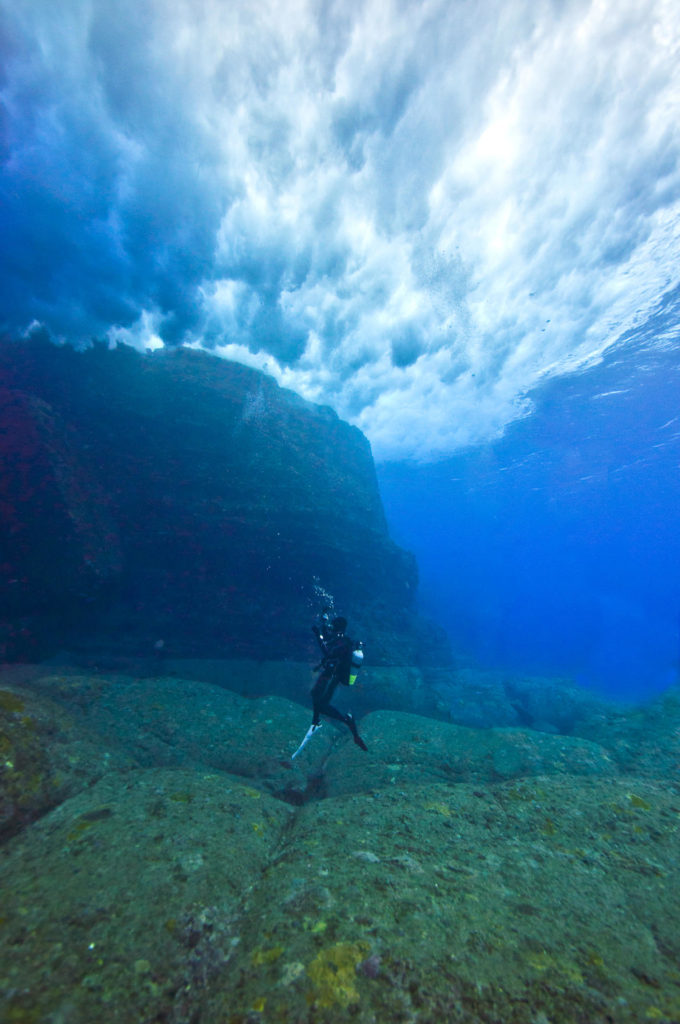The many islands and coastlines that make up Japan are home to the greatest diversity of large and small life forms on the planet. Deciding between diving into the blue with bottlenose dolphins or drifting across a fantasyland reefscape inhabited by millions of fish resplendent in all the colors of the universe is no easy task. There are countless great scuba diving sites, but the impossible mission we have undertaken is choosing just ten to be your gateway for exploring Japan’s underwater world.
Japan consists of 6,852 islands including the four main islands—Hokkaido, Honshu, Shikoku and Kyushu. Japan and the ocean have always been one. Ama, professional female divers, have been Japan’s most famous divers since recorded history. Another pioneer was Watanabe Riichi. In 1918 he developed, manufactured and actually dove in his fully operational scuba unit almost 25 years prior to Cousteau’s. Giant squid were first filmed off Ogasawara and Japanese cuisine features some of the finest seafood on the planet.
Ogasawara, Tokyo
The Bonin Islands, better known in Japan as the Ogasawara Islands, are a refuge for marine and bird wildlife. They are sometimes referred to as “The Galapagos of Japan,” where you can observe humpback whales, spinner dolphins, bottlenose dolphins, sperm whales and occasionally spotted dolphins, short-finned pilot whales, whale sharks and other pelagics. But squid, ragged-tooth sharks, sea turtles and amazing reef and rock formations make this place special. In 2011 the Ogasawara Islands were added to UNESCO’s World Heritage List.
Many places in the world do not allow dolphin and human interaction. But here, all-day dolphin watching and swimming tours with bottlenose and spinner dolphin pods are offered and can even be done in between dives.
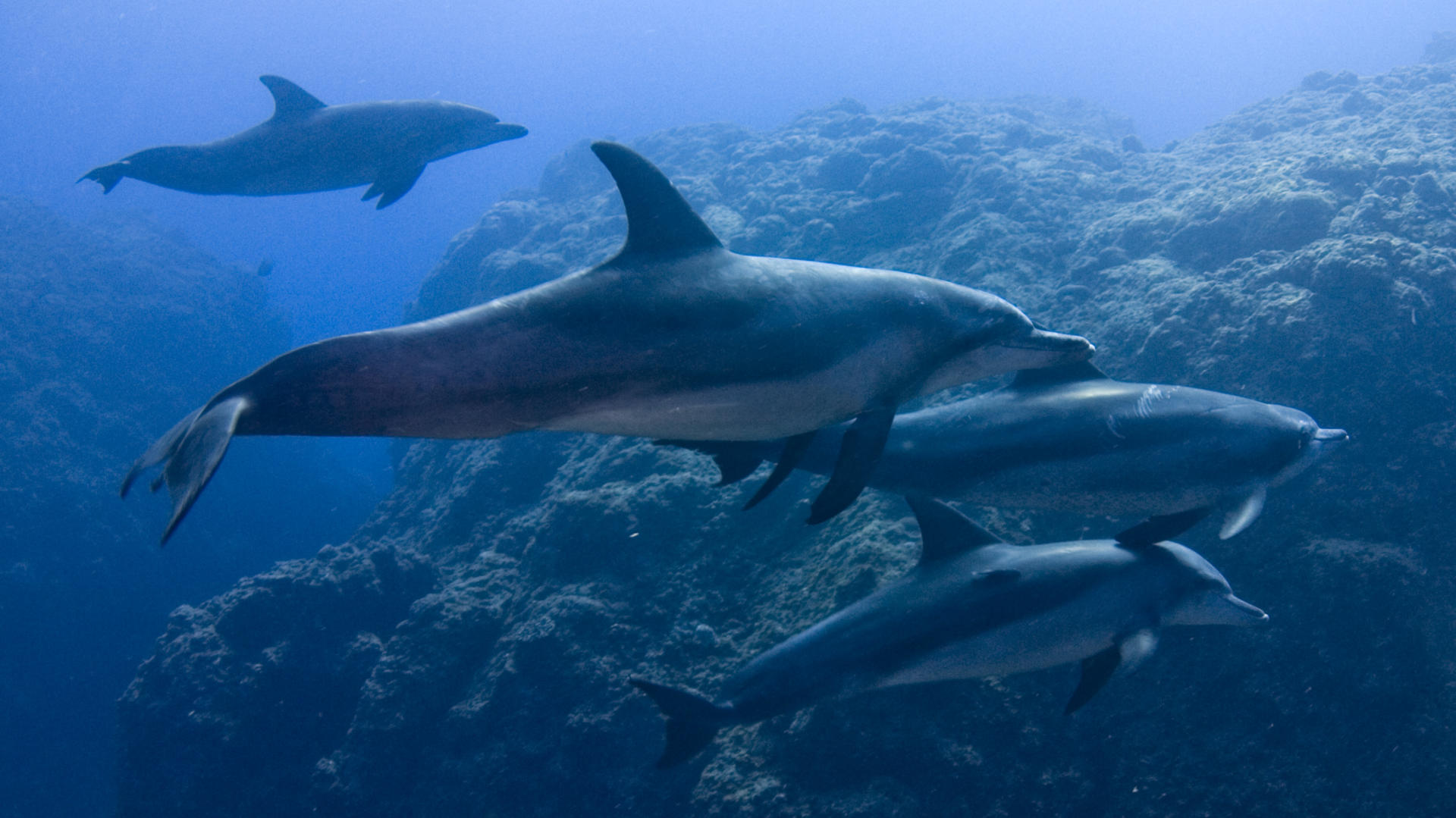
Dolphin snorkeling is a real adrenaline pumper. You hang off the back dive step of the boat and get up ahead of the pod. You are given the go sign and snorkel toward the pod, hoping they will want to slow down and play or interact with you.
Bottlenose are more likely to be approached than the spinners. They can even be seen on scuba, whereas the spinners don’t seem to like divers as much. Even when dolphins move slowly, they are still moving at a pretty good clip. Kicking quickly, you can see odd barnacles on some of the bottlenose dolphins’ tails and remoras attached to their sides. Whale watching is also popular here.
Shark City, Chiba
Tateyama-Ito is a quaint Japanese fishing town with one special attraction: Shark City. Though it is near Tokyo, the big city has no sway here. Ito is open to the sea and has become known as a spot where divers can enjoy sharks safely. It’s just a five-minute boat road from the port to the famous dive site where rocky reefs and terrain set the stage for shark tornadoes and dancing stingrays. The site, which has been around less than a decade, is the work of the man who has the diving permits for the signature dives in this area— the shark dive and the molamola dive.
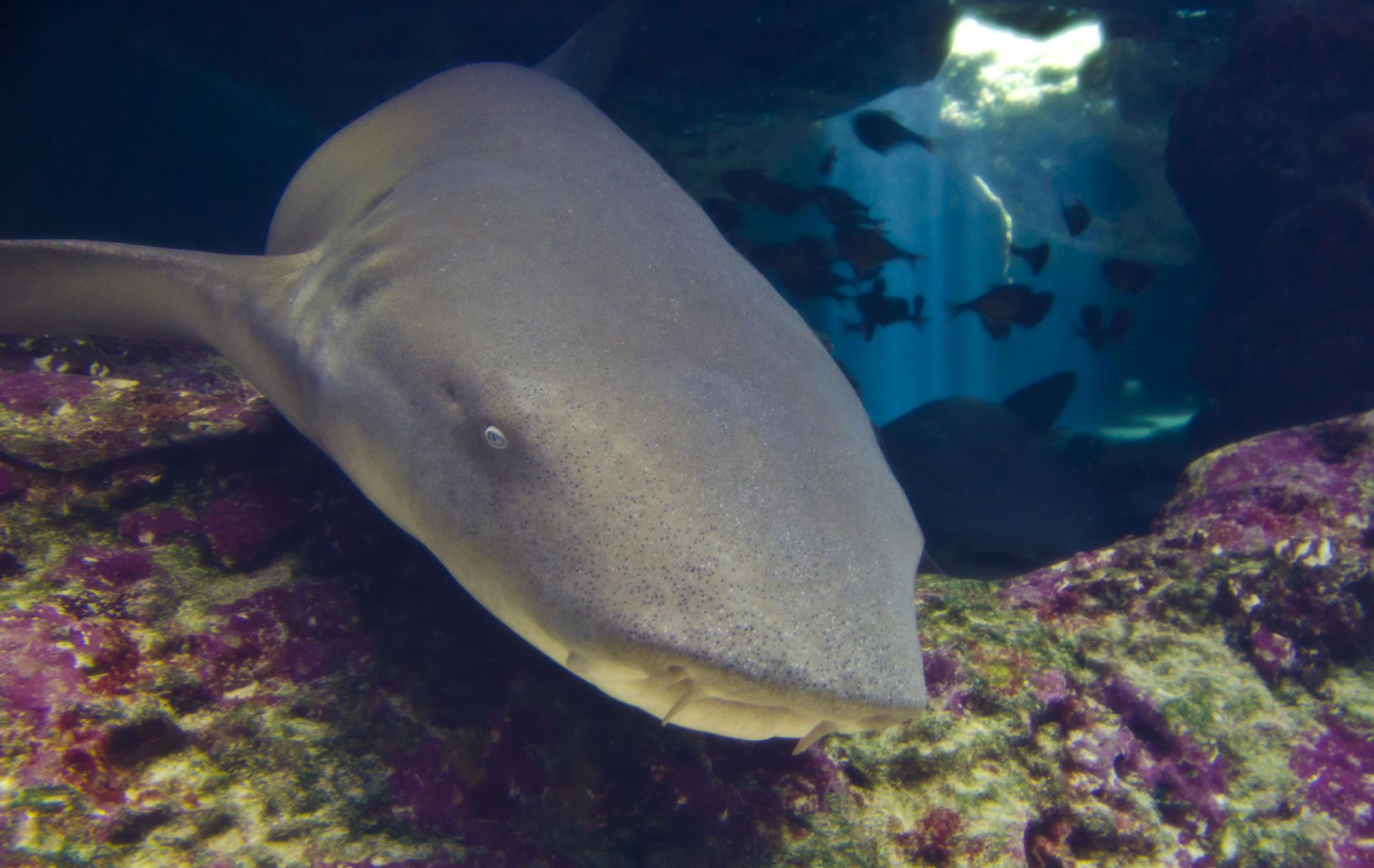
Mr. Shiota of dive shop Bommie thought he could create a dive by luring sharks away from the fishing ground using bait. In the beginning, even though many sharks gathered at the bait, they would disappear as divers approached.
By repeating the feed many times and with divers present they finally got used to divers and liked being fed. The new, exciting shark and stingray dive was born.
Osezaki, Shizuoka
You know you’re in Japan when you can dive with a view of Mt.Fuji. A mere two-hour drive from Tokyo brings you to Osezaki, the slender cape at Suruga Bay on the northwest end of the Izu Peninsula. The cape plays the role of a breakwater, so the inside of the bay is calm throughout the year.
According to a survey by the Kanagawa Prefectural Natural History Museum, more than 600 fish species have been confirmed here. Suruga Bay is the deepest bay in Japan plunging to 2500 meters. Divers sometimes see deepwater fish in the shallows near Osezaki. The biology of the area is fascinating.
Here the ocean floor is sandy and great for small and odd critters. Look for lefteye flounders and stingrays which gaze up from the bottom. If they see a diver, they may scurry away in a cloud. Look also for frogfish in various sizes and colors—white, yellow, orange, black—using lures on their noses to attract their next meal.
Mikurajima, Tokyo
Mikurajima rises from the ocean like a beacon for dolphins. The terrain is best described as vertical, making one wonder how the first people even landed here. Rugged as they come yet beautifully forested, Mikurajima is a small, yet spectacular, piece of Tokyo real estate known for its deep forest and huge, ancient trees—and, of course, dolphins.

Dolphin lovers come to Mikura to see the large group of bottlenose dolphins. This place is rich in sea life and the dolphins thrive here, finding an abundance of food in the deep waters just off the island, while the steep cliffs offer shelter from inclement weather. As the ship arrives countless sea birds steal fish from the water.
The Dolphin Communication Project is a wonderful group that tracks the two-hundred plus dolphins that live around the island. Boats go out three to four times daily. The dolphins appear well fed and there are beautiful beds of swaying seagrasses that are mesmerizing. They don’t always stop to play so you may need to do a few drops, but when they do, it is magical.
Owase, Mie
Owase is a little fishing town located in the southern part of the Kii Peninsula, about 200 kilometers from Osaka and 500 kilometers from Tokyo. Thanks to the Kuroshio Current, which runs near the coast, Owase enjoys a warm climate throughout the year.
Just an eight-minute boat ride from the harbor, Gyosho is probably the most popular dive site in the area. It is an artificial reef set up to lure large migratory fish. A lot of concrete blocks have been placed on a sandy bottom and soft corals have taken hold, making the reef popular with fish and macro life.
Small creatures including nudibranchs, seahorses, frogfish, anemone shrimps and so on, all inhabit this spot so macrophotography is fun here. The mid-structure also has cardinal fish, horse mackerel and lyretail anthias.
Large painted sweetlips, filefish, lion fish and, in winter, john dory fish make a showing. It’s a great spot for wide angle and macro if the diver is shooting stills or video.
Kajika, Mie
Another small fishing village called Kajika is just a 30-minute drive from Owase. The Kajika Diving Service is managed by the affable Mr. Nakamura. This area is surrounded by peninsulas and islands, so the ocean is usually protected and calm throughout the year. Visibility is good as there is no river in the area.
There are six sites in the U-shaped bay. Each one is within five minutes by boat from the little harbor. Although the landscape above isn’t too exciting, the seascape is rich and varied. On the shallow rock shelves, communities of sea anemones spread like flower gardens. On the sandy seabed, big and mid-sized fish like Japanese bullhead sharks and stingrays rest on the sea floor.
Even though Kajika is just south of Gyosho and Obana Point, there are even more tropical creatures and corals here due to the warm current. It is heaven for macro subjects like nudibranchs, shrimps and crabs and a must-stop for divers when in this part of Japan.
Sunabe Sea Wall, Okinawa
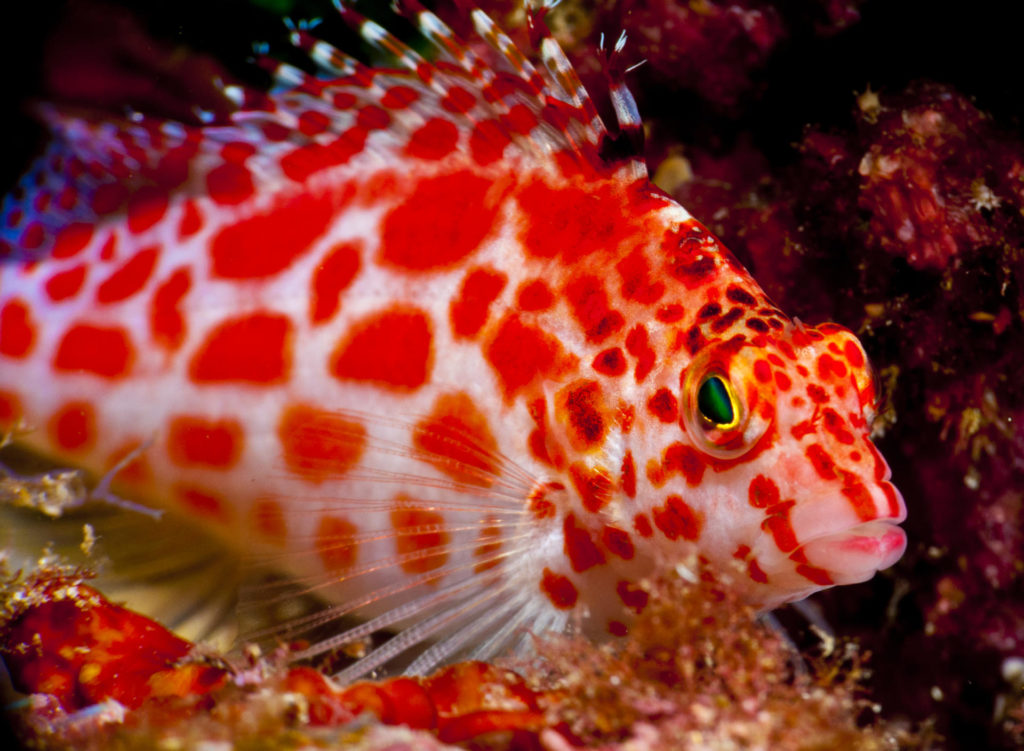
Sunabe is a popular area on the main Okinawa island. A residential community full of dive shops, tank rentals and filling stops, restaurants, izakayas and small hotels line the shoreline. It is one of three districts of Chatan, a trendy town of about 26,000 people an hour or less (depending on traffic) from downtown Naha.
In general, currents around the sea wall are mild, with many of the dive sights in the area accessible when conditions at other popular sites are not so favorable. Site names along the wall include Junkyard, Seaside Palace, and Curry House.
Over the reef there is a slope that leads to finger reefs and coral areas with soft coral gardens. Look for cuttlefish, shrimps and squids. Molluscs like Triton’s trumpets, cowries and murexes are all commonly seen. Pretty much any point along the seawall is open for exploration. Diving is generally shallow and every dive is different and produces varied marine life.
Maeda Blue Cave and Reef, Okinawa
You can’t say you have dived or snorkeled Okinawa unless you’ve been to Maeda Point. This is where planeloads come every weekend to do all kinds of diving, instruction and snorkeling. It is so popular, there’s a gated pay parking lot and a massive food and change facility on the grounds with a nice sheltered overlook of the entire bay.
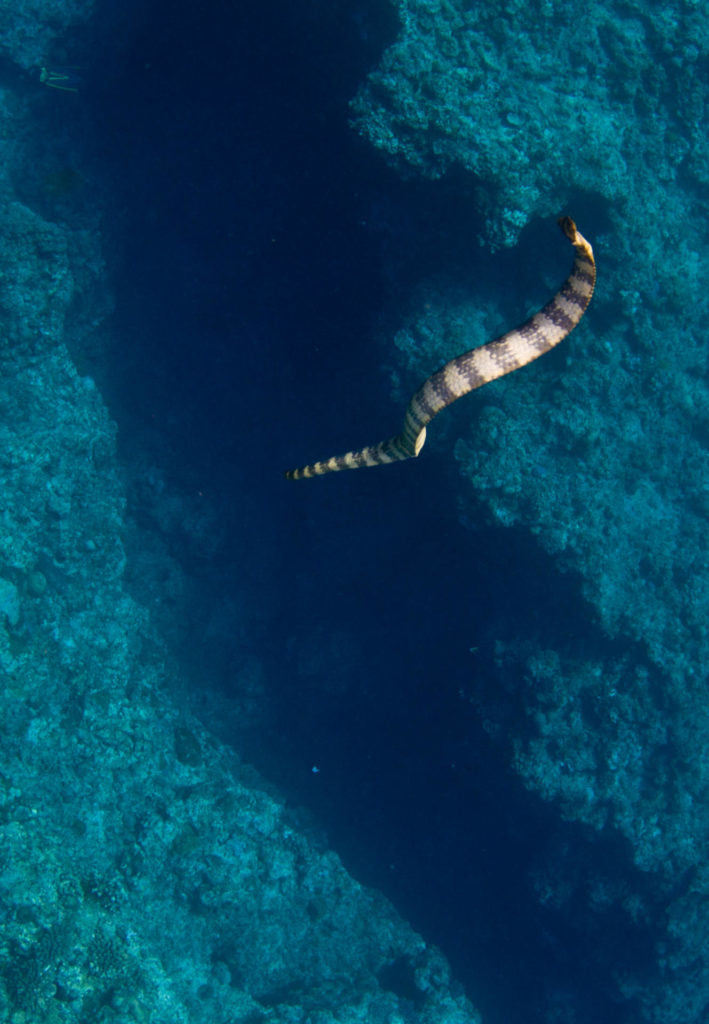
Entry is easy with a wide set of stairs leading down the cliff line to the ocean. In late June and July, there are beautiful silver swirls and clouds of sardines and other baitfish attracting predators and even dive-bombing sea birds. Look for moray eels, sea snakes, sea anemones with their clownfish, lionfish, shoals of squid and large batfish schools. Save some energy for the exit and the climb back up the stairs.
Manta Scramble, Okinawa
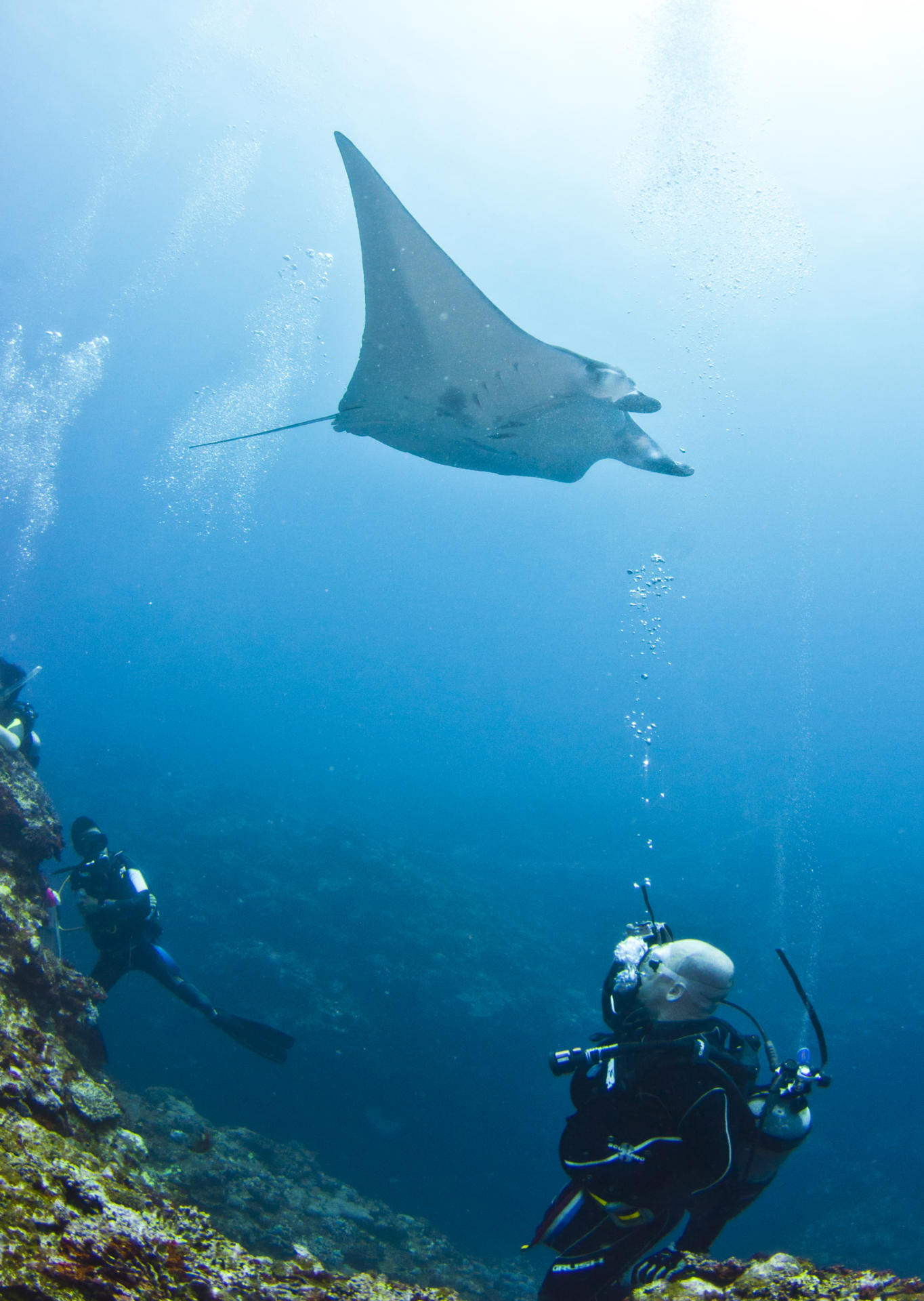
Ishigaki isn’t a heavily populated island (about 50,000 residents) and locals are friendly. The island life vibe is palpable in the small pubs, eateries and shops that line many streets in Ishigaki City, while kids play baseball or ride their bikes around town. The famous Okinawa folk singer Rimi Natsukawa hails from here—best-known for the song, “Nada Soso” (“Large Tears are Falling”). This hilly and lush island is great for cycling, sea kayaking, SUP, kitesurfing and other “sun and fun” sports on land and in the water.
Manta Scramble has lots of high rise coral heads separated by deep valleys. While the cleaning stations that attract the mantas are located largely on the tops of these big coral structures, the deep valleys in between let divers move slowly from one cleaning station to another as the mantas move around. This dive is aptly named as it is a bit of an undersea scramble to get to a site and settle in so the manta isn’t disturbed.
The area also has quite a few sea anemones and fish, but divers come to view the beautiful, graceful mantas. There is a bit of an open valley that leads to another shallower adjacent site called Manta Point, not to be confused with Iriomote’s Manta Point.
Yonaguni, Okinawa
Yonaguni is a majestic little outcrop. The charming island is home to just three small villages and features a rocky, rugged coastline that looks like something out of Jurassic Park. Cape Irizaki, the western tip of the island, is the westernmost point of Japan. It’s not the earth’s end, but you can see Taiwan on a clear day.
Kaitei Iseki is the famous underwater monument found by Kihachiro Aratake. If the monument is indeed manmade or modified by man, that would date it back to the last Ice Age (around 10,000 B.C.) when the sea level was 40 meters lower than it is now and Yongunijima was part of a land bridge connecting Japan, Taiwan and the Chinese mainland. This would make the monument the oldest man-made artifact on Earth, significantly pre-dating the pyramids in Egypt. One can see why this has sparked quite a bit of interest and debate.
The always friendly Aratake-san, who discovered the mysterious underwater monument off the coast of Yonagunijima in 1986, is also the founder of Sou-Wes Dive Center. He was scouting the seas around the island for new hammerhead shark-watching points and there it was, something that resembled one of Japan’s ancient temples or forts—but more weathered and primitive. Look for hammerhead schools, sea turtles and lots of fish at this special place.
Practicalities
Getting there: Most international travelers arrive to Japan via Narita (outside Tokyo), Haneda (in Tokyo), Kansai (outside Osaka) or Chubu Centrair (outside Nagoya) international airports. Japan has a great railway system although some areas may be easier to access by rental car so be sure to bring your international driver’s license.
Accommodation: Japan’s world-class diving has placed many areas on divers’ radar and tourism infrastructure in Japan is booming. Numerous dive shops offer package deals that include accommodation and meals. Liveaboard diving has not really caught on in Japan for a number of reasons but most coastal towns and islands will have dive businesses that work with local accommodation.






